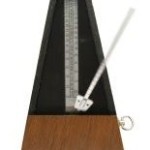This English hypenated dictionary was initially created for use with Philip Aker’s Text Editor plugin, used within Finale (Mac version). It could easily be adapted for use in any music notation application (Finale, Sibelius etc.)
I have lost contact with Philip but the original purpose was to enable automatic hyphenation of lyrics for vocal/choral works. The resultant text could then be assigned to music as per the ‘Click to text’ method of lyric entry within Finale.
Essentially: to enter or import a block of text (e.g. a poem) and have it automatically hyphenated.
It was adapted from Grady Ward’s public domain English hyphenation dictionary. It contains approximately 380 000 words. This original hyphenation dictionary contains many acronyms, the vast majority of which have not been filtered out.
The hyphenation in this dictionary is based upon how singers sing syllables and text. The general rule is that each syllable should begin with a consonant. In singing relating to Western art music practice, vowels take up the majority of the sung note, meaning that consonants occur as late as possible, i.e. at the start of the next word or syllable. For example:
- hyphenation = hy-phe-na-tion (not hy-phen-a-tion, which makes more sense when read, but not when sung)
Double letters or consonants are broken up between syllables, particularly when they have a different sound. For example:
- syllable = syl-la-ble (the le in ‘ble’ is in essence a vowel, so is not broken up).
- ‘hyphenation’ = hy-phe-na-tion (the ‘ph’ is one sound and functions as such, so it is not broken up).
- ‘exception’ = ex-cep-tion
There are some exceptions to the rules given above:
– I have left ‘ing’ at the end of words as a standalone unit e.g. ‘des-crib-ing’. This is ugly but there are so many exceptions that require fixing by hand, it will take a long time!
– The issue of the letter ‘x’ is also an interesting one, particularly because there are two consonants in the one letter (ks). In the majority of cases I have left the ‘x’ with the preceding syllable. For example:
‘lexicon’ = lex-i-con (not le-xi-con)
This is very much a work in progress. You can scroll to any section and find a myriad of corrections that are required. However, out of 380 000 words, it’s pretty good in general.
If you wish to use this document as part of a software release of some sort (e.g. as part of a plugin or music notation application), you must ask my permission first. It will more than likely be granted free of charge.
Download the hyphenation dictionary. (1.1 MB)
Version History:
v.1.00 – initial release
v.1.08 – Nov 2006 – 2nd release
